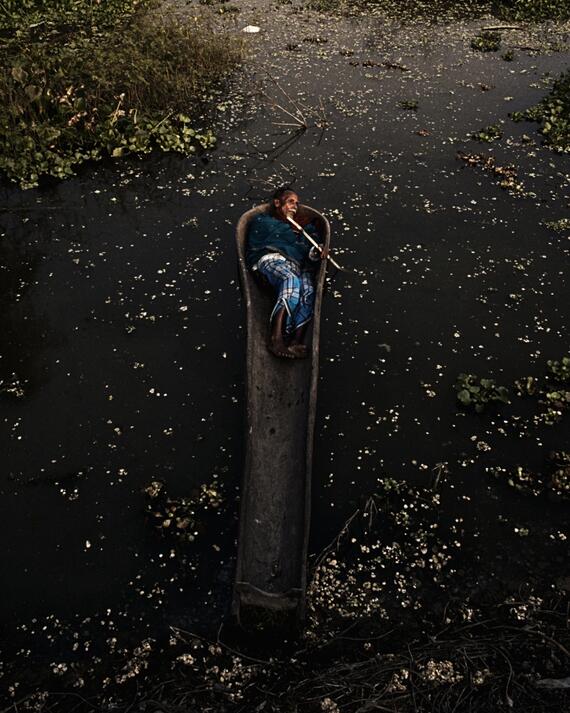Magnum Foundation Photographer Spotlight: Soumya Sankar Bose and Tiretta Bazaar, India

In 2022, World Monuments Fund (WMF) and Magnum Foundation announced that they were partnering to support local photographers around the world in documenting the sites on the 2022 World Monuments Watch and the communities around them.
Soumya Sankar Bose, one of this year’s 12 grantees, is a Kolkata-based photographer who plans to document the architecture, culture, and language of Tiretta Bazaar, the oldest Chinatown in India, while also looking at the discrimination the neighborhood’s residents face today. We spoke to Soumya as part of a series of interviews with the Magnum grantees; an excerpt of our conversation, edited for clarity and length, can be found here.
WMF: Your artistic practice often incorporates elements of acting and reenacting. How did this interest develop?
Soumya Sankar Bose (SSB): I’ve always been interested in the past, and photography is sometimes difficult because it does not have a voice itself. To represent the past, we need to act something out. [In terms of Tiretta Bazaar’s past], India and China’s relationship became troubled from 1960. In Kolkata, communism also inspired people in the 1960s and ’70s. It’s very difficult to tell at this stage what exactly I’m going to make, or if there is something I need to recreate, but these are points of interest.
WMF: Your photos are often dominated by shadows or dark tones. How did you arrive at this aesthetic?
SSB: I never intend to make my visuals dark, but somehow it came up over the last ten years of practice. One of my projects [on India’s queer community] is called Full Moon on a Dark Night, and the people I worked with shared some dark memories. So, when I was thinking of how to document them, I came upon the idea of creating something dark and bringing it back in the present. The photographs I try to make depend on oral history or memories and their psychology.
WMF: You’ve mentioned that you’re interested in incorporating literature into this project. What kinds of literature will you be incorporating?
SSB: This community has come into Bengali literature many times as a reference in the last 50 or 60 years, from thrillers to romantic novels. I’ve also found a few amateur writers from the community, so I want to know how they represent themselves in their own literature. Who is representing whom and how?
To read more interviews with the Magnum Fellows, click here.
Learn More
World Monuments Fund safeguards cultural heritage around the globe, ensuring our treasured places are preserved for present and future generations.
Sign up for our newsletter to receive regular updates on our projects, stories from the field, upcoming events, and more!
